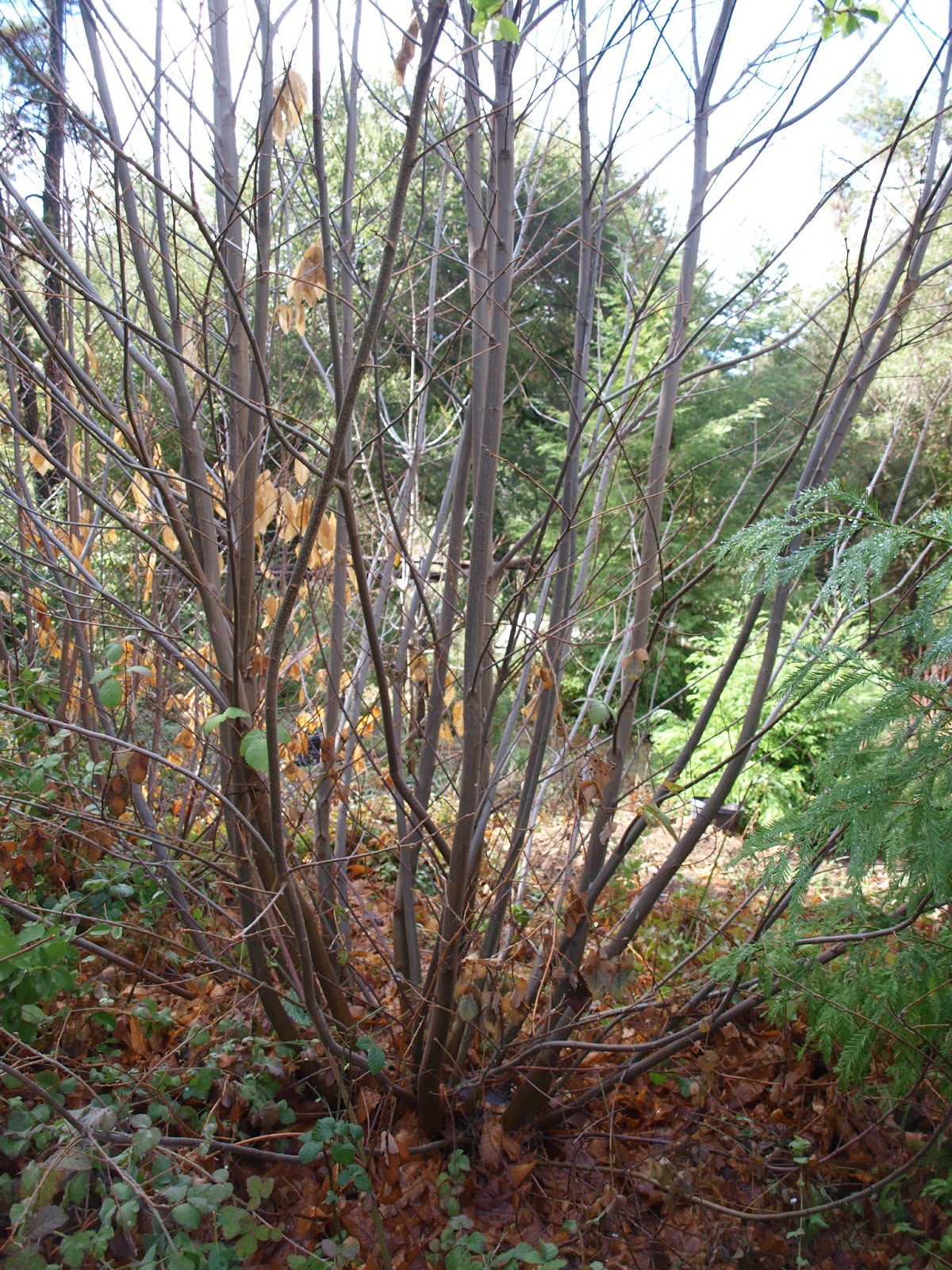I've always been ambivalent about cats in the garden because of their
instinctive drive to kill wildlife, but I live with a bunch of cat lovers, so
there have been cats around my garden for as long as I can remember. Late last
year we were forcibly reminded that domestication doesn’t exempt cats from
being a part of the food chain when two out of our three were eaten by coyotes.
I accept this as a natural occurrence, as coyotes have to eat too of course
(unlike a letter writer in a local newspaper, who somehow though the city was
at fault for not killing all cat munching coyotes in her neighborhood). However
I was a little surprised at the dramatic effect this would have on my vegetable
garden.
Broccoli after rabbits and quail
Last year I established my new vegetable garden in an area that had
previously been covered in poison oak and I created the beds and planted with
good success. This year, without the constant patrolling of the cats, the
garden is overrun with quail and rabbits and any palatable green leaf is
quickly shredded by one or the other. This has clearly illustrated how the cats
made a signifcant contribution toward keeping the vegetable garden productive.
For as long as their was a potential cat lurking behind every plant, the birds
and rabbits only entered occasionally and nervously, but once this threat was
gone (the one remaining cat is a little slow) they have felt comfortable enough
to take up almost permanent residence. Now whenever I walk through the garden
there is a flurry of wings and rustling of leaves as quail and rabbits flee in
every direction. Cats also hunt gophers of course and were helping to
keep those under control too.
Of course there are plenty of good arguments
against keeping cats, but there are definitely beneficial aspects from a
gardeners viewpoint. The reason cats were domesticated in the first place is
that they are very good at killing the wildlife that humans find to be a
nuisance. Unfortunately they don’t stop there, they will kill almost anything
they come across that isn’t too big, including frogs, lizards, snakes and
countless birds and small mammals. A recent study estimated the cats of America
(80 million pets and about an equal number of feral cats) kill 1.4 to 3.7
billion birds and 6.9 to 20.7 billion mammals every year (this may be as many
as 1 in 10 of all birds!)
There are other effective ways to
keep small pests away from your garden, but none are as easy as cats. Being
physically in the garden works, but of course this isn’t very practical to be
there all of the time. Bird netting can be used to protect individual beds, but
it is a pain to set up, and you have to move it aside for harvest, etc. Fences
cost money to build, but work well for rabbits as they are probably the worst
climbers in the world, but you need to fold out the bottom of the fence and
bury it, otherwise they will dig underneath (they are very good diggers). You
also need to use a small mesh - when I cornered a rabbit in my garden it
squeezed through an opening in the fence that was little bigger than my thumb.
It looked like the rabbit was made of foam rubber, I couldn’t believe my eyes.
A fence is useless for birds of course, they will simply fly over it.
A rabbit went through these opening!
My daughter recently got a new kitten (my garden is paradise for cats), which will hopefully help to swing the balance a little more in my favor. Hopefully it will survive long enough.
Cat in chestnut tree

































